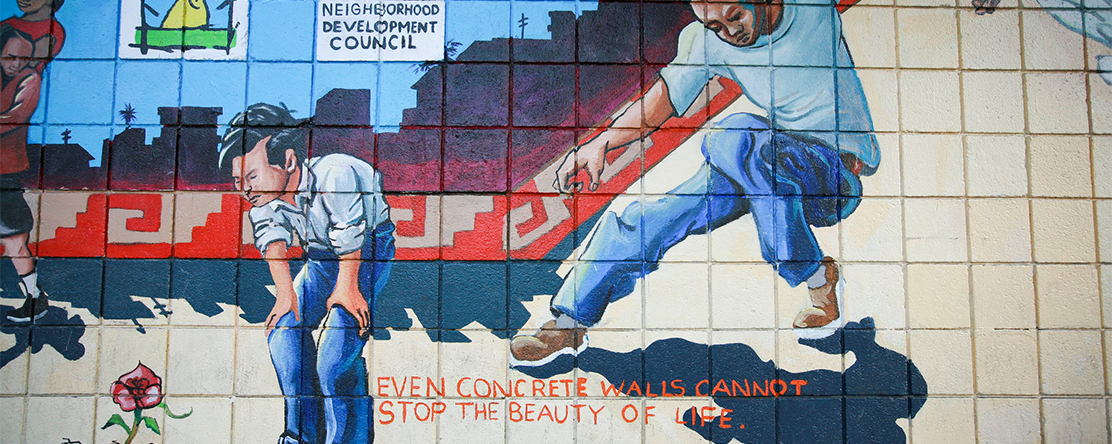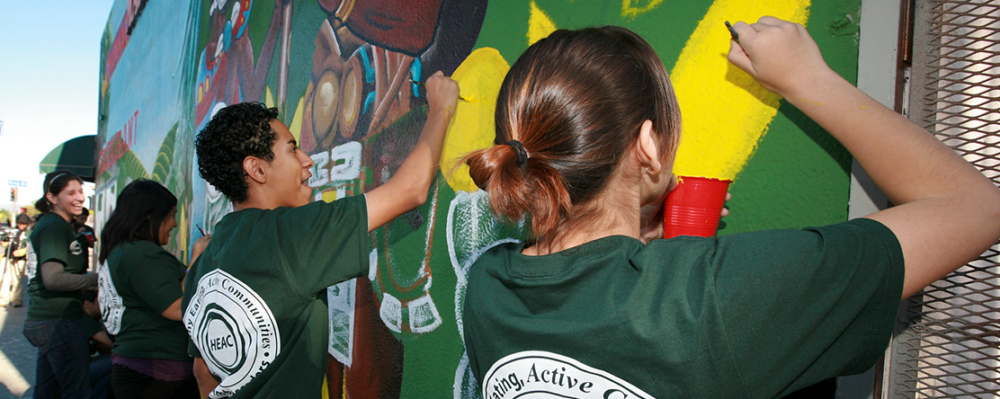
Recommendations for Pediatricians: Partnering with Community Development to Improve Child Health
- Renae A. Badruzzaman, MPH
Ruth Thomas-Squance, PhD, MPH
-
Focus Areas
Health Care & Population Health, Healthy Communities -
Issues
Community Development, Population Health -
Expertise
Public-Private Partnerships -
Programs
Build Healthy Places Network

It is often said that ZIP code is more important than genetic code in determining one’s health and opportunities—and studies show that children’s lives are profoundly impacted by the quality of the neighborhood where they grow up. What if pediatricians had community-based partners with access to hundreds of billions of dollars to invest in these neighborhoods, and were ready to collaborate on how to best spend those funds for the greatest benefit of children living in poverty?
Authored by Douglas Jutte, Renae A. Badruzzaman and Ruth Thomas-Squance of PHI’s Build Healthy Places Network and published in the official journal of the Academic Pediatric Association, “Neighborhood Poverty and Child Health: Investing in Communities to Improve Childhood Opportunity and Wellbeing” provides an introduction to the U.S. community development sector—a nationwide network of organizations, policies, and financing not well known to most pediatricians. The article also gives examples of this sector’s investments that promote health and opportunity, and shares recommendations for how pediatricians can advise, collaborate, and partner to help create healthier neighborhoods where all children can grow and thrive.
Read the article
Across the country, thousands of community development corporations, community development financial institutions, affordable housing developers, and regulated for-profit banks together invest over $300 billion annually in affordable housing, childcare and early learning facilities, recreation centers, community clinics, grocery stores, small businesses, and financial services for low-income families and neighborhoods.
Recommendations for pediatricians
What is the role of pediatricians in this work—as practitioners, educators, or researchers? See opportunities for how pediatricians can partner with the community development sector:
Education & Raising Awareness
A first step is increasing awareness among pediatricians of the existence and work of the community development sector and its potential strengths—and weaknesses—for addressing important neighborhood-level drivers of childhood poverty and poor health. A greater understanding of scale, scope, policies, and financing tools available for community-level interventions will increase pediatricians’ capacity to play a more active role. Suggested actions include:
- Provide opportunities for community development leaders to speak at pediatric meetings and conferences to increase awareness and partnership opportunities.
- Incorporate this field of work directly into pediatric residency training, perhaps through the advocacy curriculum and requirements.
- Use the mapping tools provided in Table 1 to better understand the neighborhoods where patients live.
- Explore the resources developed by Build Healthy Places Network to help navigate this sector, including a jargon buster, case studies, and essays exploring links between health and community development.
- Review Practical Playbook II: Building Multisector Partnerships that Work written for health practitioners, which has a chapter on community development.
Engaging & Advising
We have described opportunities for pediatricians to meaningfully engage community development organizations to influence neighborhood investing, and community development colleagues can similarly engage with health care. Potential steps include:
- Identify potential community development partners working in your own neighborhoods using the Partner Finder tool developed by Build Healthy Places Network.
- Join the board/advisory group of a local community development organization or attend community planning meetings.
- Engage your state housing authority to explore adding child-friendly criteria to the QAP process described above.
- Work with CDFI and CDC partners to strengthen their applications for LIHTC and NMTC dollars and increase their child and family focus.
- Ensure that community development professionals participate in your local hospital’s required community health needs assessment and community health improvement plan.
- Invite a community development leader to join your hospital or clinic board, advisory groups, managed care organization, or health teams.
Advocacy
Doctors, especially pediatricians, represent credible, influential, and unexpected voices in policy discussions around community economic development. Pediatricians can leverage this authority to influence the distribution of billions of dollars annually and ensure that children are at the center of decision-making through the following:
- Advise policy makers and community development leaders on the evidence for neighborhood poverty as a driver of poor health, particularly in children.
- Advocate for greater community development resources addressing neighborhood poverty at the local, state, and federal level.
- Request that community developers incorporate current knowledge of child development, family health needs, and SDOH (social determinants of health) into their investments.
- Encourage hospitals to evaluate their role as an anchor institution supporting poverty-focused community development investments.
- Incentivize cross-sector partnership by obligating hospitals to align their community benefit dollars with local community development investments. These co-investments can speed creation of housing, early learning centers, schools, grocery stores, or other critical needs.
Research
Despite what we know about the links between poverty, neighborhood, and health, important questions about how to best invest in low-income communities remain unanswered. Pediatric researchers can:
- Answer questions like, if quality housing, affordable food, and childcare options are all needed to improve children’s lives, which should be invested in first? Or what elements are required to reliably reduce adversity for children in that community?
- Influence community developers through new research on the impact of neighborhood investments on children, thus making the case to invest in new and innovative ways.
- Make use of “natural experiments,” in the form of current and future neighborhood interventions investing hundreds of millions of dollars in low-income communities, by examining variations in health and developmental outcomes across different types of investments, communities, and populations, thereby filling vital evidence gaps.
- Provide suggestions for short-, medium-, and long-term health outcomes to be incorporated into community development evaluations.
Work With Us
You change the world. We do the rest. Explore fiscal sponsorship at PHI.
Support Us
Together, we can accelerate our response to public health’s most critical issues.
Find Employment
Begin your career at the Public Health Institute.


